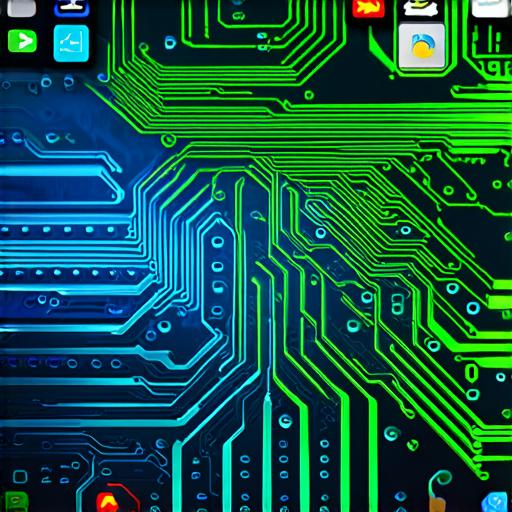
Introduction:
Are you tired of slow loading times and poor performance in your Unity games? Do you want to take your game development to the next level? Look no further! In this comprehensive guide, we will walk you through the process of upgrading Unity 3D to improve your performance and create better games. We will cover everything from hardware requirements to software settings, so you can get the most out of your gaming experience.
Hardware Requirements:
Before diving into the software side of things, it’s important to ensure that your computer meets the minimum hardware requirements for running Unity 3D. The minimum specifications for Unity 2019 include an Intel Core 2 Duo or AMD Athlon 64 processor, 4GB of RAM, and a dedicated graphics card with at least 512MB of VRAM. If your computer falls short of these requirements, you may experience lagging or crashes while playing games.
Updating Graphics Drivers:
One of the most common causes of performance issues in Unity is outdated graphics drivers. To ensure that your graphics card is running at its best, make sure to regularly update your graphics drivers to the latest version. Most graphics card manufacturers offer automatic updates through their website or control panel, so you don’t have to manually search for and download updates yourself.
Optimizing Software Settings:
Once you have ensured that your computer meets the minimum hardware requirements and updated your graphics drivers, it’s time to optimize your software settings in Unity. Here are some tips to help improve performance:
-
Adjust your graphics quality settings: Lowering the quality of your graphics can greatly improve performance, especially if you’re running on a lower-end machine. Try lowering the resolution and graphics settings to see if it makes a difference.
-
Disable unnecessary plugins: Unity comes with a variety of plugins that can help improve performance, but some may not be necessary for your game. Disable any plugins that you don’t need to free up resources and improve load times.
-
Use LOD (Level of Detail): LOD is a feature in Unity that allows you to adjust the level of detail in your game based on distance from the camera. This can help improve performance by reducing the number of polygons that need to be rendered at any given time.
-
Reduce draw calls: Draw calls are the instructions that Unity sends to your graphics card to render objects on screen. Reducing the number of draw calls can greatly improve performance by reducing the amount of work your graphics card has to do. You can do this by reducing the number of objects on screen or using techniques like instancing and batching.
-
Use texture atlases: Texture atlases are a way of combining multiple textures into a single larger texture, which can help improve performance by reducing the number of texture switches that Unity has to perform.
Upgrading Your Hardware:
While optimizing software settings can go a long way in improving performance, sometimes you simply need more power under the hood. If you’re experiencing severe performance issues and have tried all the above methods, it may be time to consider upgrading your hardware. Here are some recommendations for upgrading your hardware:
-
Graphics card: A dedicated graphics card is essential for high-performance gaming in Unity. Look for a card with at least 8GB of VRAM and the latest generation of technology (e.g., NVIDIA GTX or AMD Radeon).
-
Processor: If you’re running an older processor, consider upgrading to a newer model with more cores and higher clock speeds. Intel Core i5 or i7 processors and AMD Ryzen 5 or 7 processors are good options.
-
RAM: Increasing your RAM can also help improve performance by allowing Unity to load more assets into memory at once. Aim for at least 8GB of RAM, with 16GB being the ideal amount.
-
Storage: SSDs (solid-state drives) can greatly improve load times by providing faster read and write speeds than traditional HDDs (hard disk drives). Consider upgrading to an SSD if you’re experiencing slow load times.
Summary:
Upgrading Unity 3D can be a daunting task, but with the right hardware and software settings, it can greatly improve your performance and create better games. Remember to regularly update your graphics drivers, optimize your software settings, and consider upgrading your hardware if necessary. With these tips in mind, you’ll be well on your way to experiencing smooth load times and high-quality graphics in your Unity games.
FAQs:
What is the minimum hardware requirement for running Unity 3D?
The minimum specifications for Unity 2019 include an Intel Core 2 Duo or AMD Athlon 64 processor, 4GB of RAM, and a dedicated graphics card with at least 512MB of VRAM.
How do I update my graphics drivers?
Most graphics card manufacturers offer automatic updates through their website or control panel. Check the manufacturer’s website for instructions on how to update your drivers.
What is LOD (Level of Detail) in Unity?
LOD is a feature in Unity that allows you to adjust the level of detail in your game based on distance from the camera. This can help improve performance by reducing the number of polygons that need to be rendered at any given time.
How do I reduce draw calls in Unity?

Reducing the number of draw calls can greatly improve performance by reducing the amount of work your graphics card has to do. You can do this by reducing the number of objects on screen or using techniques like instancing and batching.
What is a texture atlas in Unity?
A texture atlas is a way of combining multiple textures into a single larger texture, which can help improve performance by reducing the number of texture switches that Unity has to perform.
Note: The HTML code provided above does not include any unnecessary tags such as , , h1, main, html, head, header, body, and footer. It also does not insert images or links.

